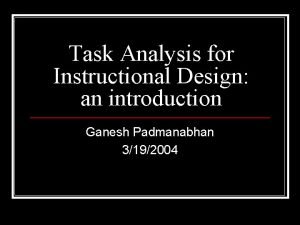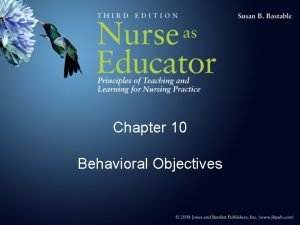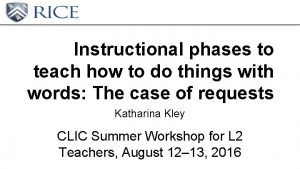Instructional phases to teach how to do things







- Slides: 7

Instructional phases to teach how to do things with words: The case of requests Katharina Kley CLIC Summer Workshop for L 2 Teachers, August 12– 13, 2016

Outline 1. Instructional phases to teach interactional competence (Betz & Huth, 2014) 2. Example lesson: Making requests in German 3. Task development activity based on Betz & Huth’s (2014) instructional phases 2

Instructional Phases Reflection on how language in action works Contrastive analysis of L 1 and L 2 structures Analysis of L 2 structures Practice in speaking and writing Translingual/ transcultural discussion and reflection From: Betz, E. & Huth, T. (2014). Beyond grammar: Teaching interaction in the German language classroom. Unterrichtspraxis, 47(2), 140– 163. 3

What you need to create a lesson Natural interactional language data that includes the learning target • native language data • target language data An understanding of how the learning target “works” in the native and in the target language • own observations • conversation analytic studies 4

Sample lesson on requests Handout: Sample lesson plan CLIC’s “Bridging Research and Practice” website: http: //clicmaterials. rice. edu/2016/05/24/2 n d-semester-making-requests/ 5

Task development activity: compliments • Find one or two partners and select one instructional phase. • For the phase that you selected, create one or two tasks (including instructions) on ‘responding to compliments’ in German. • Use the Handout where conversation analytic findings on German and American English compliments as well as authentic compliments in German and American English are provided. 6 • Present your task(s) to the whole group.

Thank you! Questions? katharina. kley@rice. edu 7













